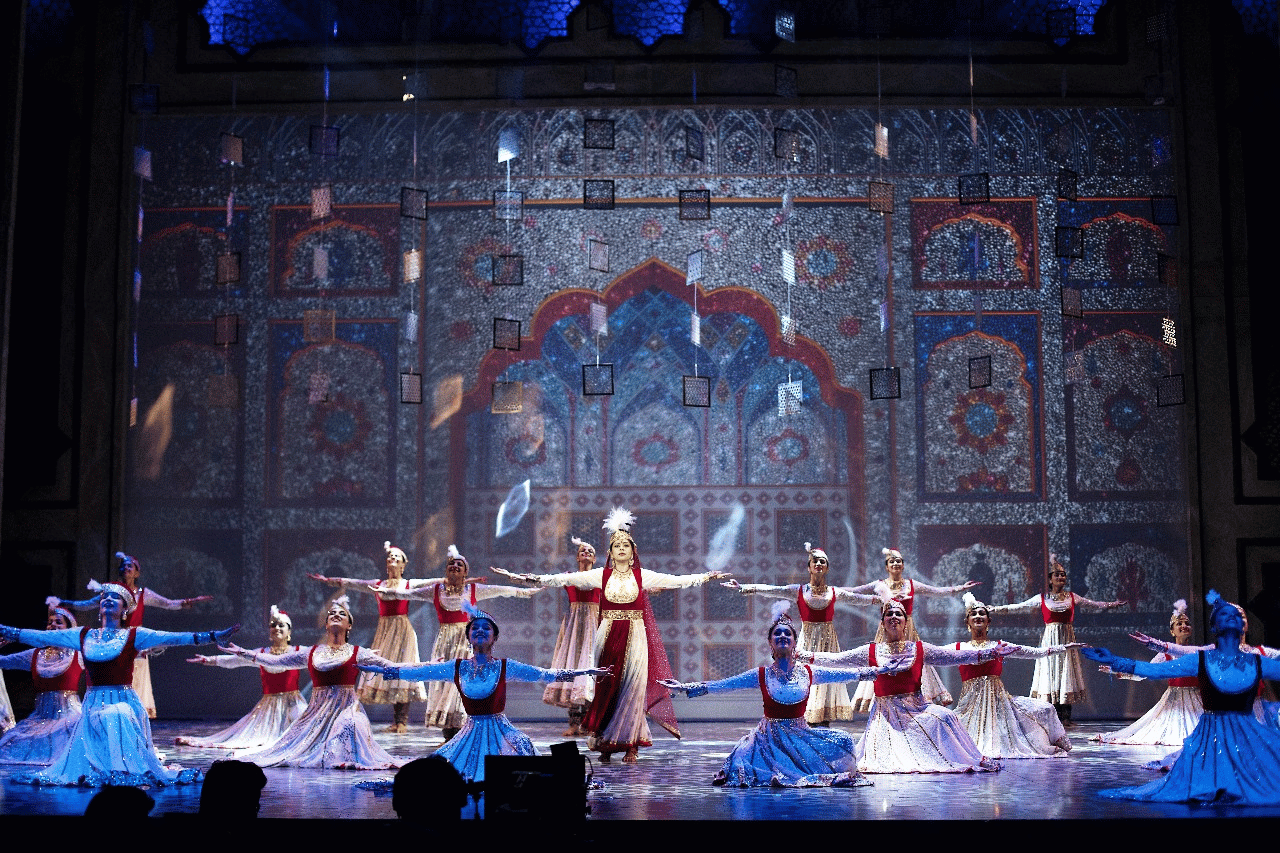
Mughal-e-Azam set to enthral audiences in California
Ritu Jha–
For Bollywood fans, the epic film Mughal-E-Azam needs
no introduction. Sixty-three years after it released in cinemas in
India, a Broadway-style musical is making waves across North America.
The
musical spectacle, produced by Shapoorji Pallonji Group (which produced
the original movie as well) and directed by Feroz Abbas Khan, has
already staged more than 200 performances across six Asian countries.
The play is scheduled for August 11 through 13 at San Jose Center for the Performing Arts in San Jose, California.
Based
on K Asif’s 1960 classic film of the same name, the play showcases
“India’s rich culture of Kathak dance and classical music intertwined in
a legendary love story.”
The 13-city US tour kicked off in Atlanta on May 26. Deepesh Salgia (pictured left), CEO & Director of Grand View Estates Pvt Ltd, Shapoorji Pallonji Group, spoke to indica about the theatrical show.
“The
response has been phenomenal in every country. We had been planning to
bring Mughal-e-Azam to the US for the last four to five years but we had
to reschedule on account of the pandemic. Finally, in May this year, we
succeeded,” Salgia said. “A large section of the audience thronging the
shows is Indian Americans, including the younger members of the
community.”
For more than 60 years, the story of Mughal-e-Azam
has enchanted fans across the globe. The theatrical production comprises
mesmerizing dance sequences, spectacular lighting, extravagant
costumes, and live singing. It has been performed in Mumbai, Delhi,
Ahmedabad, Dubai, Singapore, Kuala Lumpur, Muscat, Doha, and parts of
North America.
India’s first Broadway-style musical has a cast
and crew of more than 150 people, and has been met with all-around
accolades following its 2016 premiere in Mumbai. In 2017, it won seven
out of the 14 BroadwayWorld India Awards, including Best Play, Best
Director, Best Costume Design, Best Choreography, Best Original Set
Design, Best Original Lighting Design, and Best Ensemble Cast.
“When
we brought this show to the US, it was a massive logistical task, too,
because we did not want to scale it down. The US audience should have
the same experience as Mumbai. But that increased the complexity of
transporting the cast, crew, and the equipment,” Salgia said.
“There’s
a lot of engineering in the set design. When we travel in the US, we
move with 100 artists from India, 50 from the US, and nine huge
containers of production material, sets, electrical lights, and sound
equipment,” he added.
The Mughal-e-Azam team performs on Fridays,
Saturdays, and Sundays while on Tuesdays, Wednesdays, Thursdays, and
Mondays they travel. “Within a span of seven days, we have to travel,
unload, set up the entire thing, and test it along with the programming.
We do rehearsals and then a string of performances before getting back
to unloading, packing, and traveling again.”
Mughal-e-Azam
centers around the love story between Prince Salim and court dancer
Anarkali. Upon learning of this forbidden relationship, Emperor Akbar
vehemently disapproves and must choose between his responsibility
towards his empire and his duty as the father of a beloved son. The play
is in Hindi/Urdu or Hindustani, with LED screens displaying English
subtitles.
Cinema On Stage Inc. was instrumental in the North
American debut. “This production is a tribute to K Asif’s masterpiece,
which has enthralled the audiences for over six decades,” says Director
Feroz Abbas Khan. “A love story that threatened an empire and the sheer
audacity of a courtesan to challenge an emperor by declaring ‘Pyaar kiya
toh darna kya’ is simply breathtaking. A musical of unprecedented
scale, intensity, and grace, this is perhaps the finest moment in Indian
theatre.”
Salgia said, “Mughal-e-Azam as an art form has
enthralled audiences across nations and across generations — be its
black and white film version, color film version, or the musical play.”
In
Silicon Valley, where there are more South Indians who may not be
familiar with Hindustani, the producers are not really worried about the
reception. Salgia said, “South Indians love the show because there’s a
lot of top-class classical music in it. In fact, when our show was
staged in Mumbai, people from Bangalore and Chennai traveled to Mumbai
to see the show.”
Salgia added: “There’s too much screen fatigue.
People have had enough of mobile screens, apps, and everything on TV.
There’s a huge need for live shows to bring people out of their
bedrooms. Live shows give a lot of energy to people. Indians are earning
more and they want to enjoy better quality entertainment.”
After making a mark in the US, Mughal-e-Azam has set its sight on another “conquest”. Now the makers of the hit show want to take it on a Europe tour in 2024.
2025 schedule coming out soon!
Drop your email id to get notification




.png)